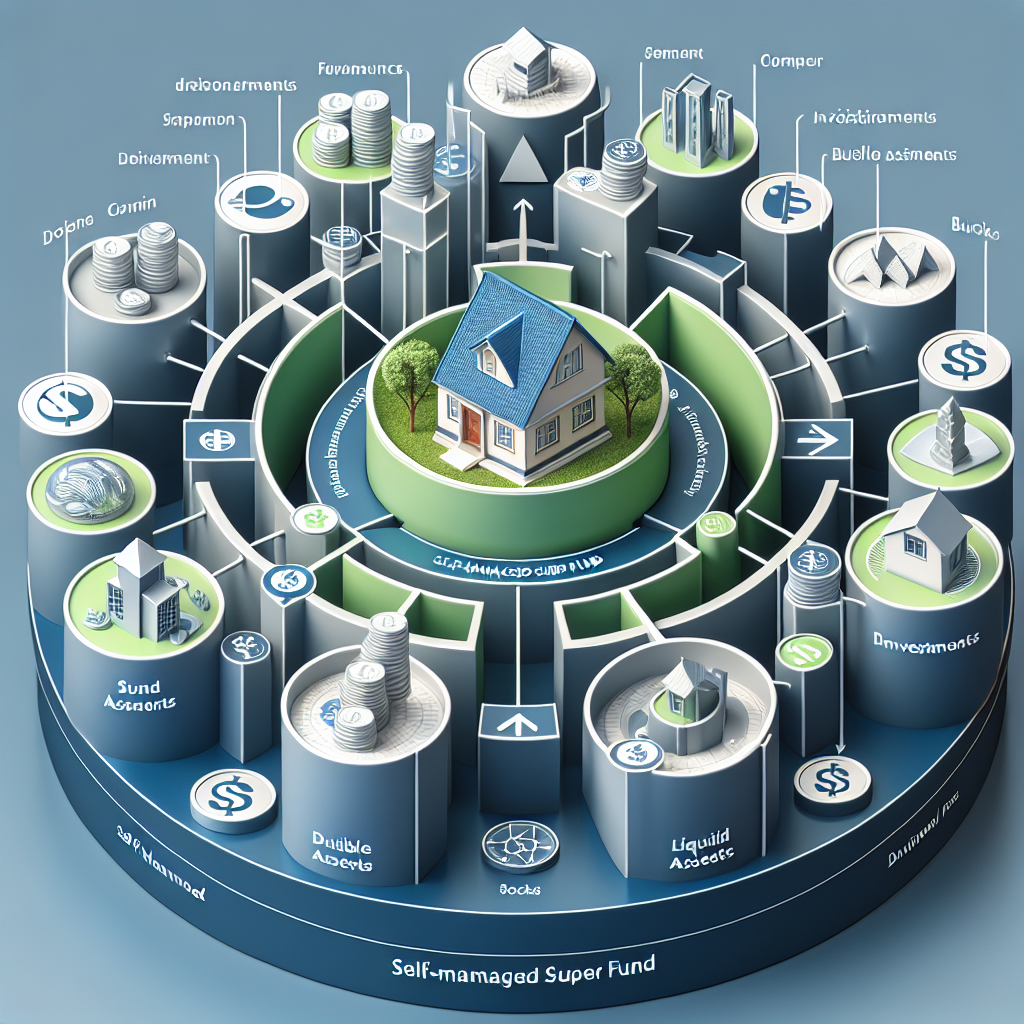Imagine having greater control over your retirement savings, with the power to invest in tangible assets that you can see and touch. This isn’t just a dream—it’s the reality for many Australians who have discovered the potential of SMSF property lending. If you’re looking to take your superannuation strategy to the next level, this could be the hidden pathway you’ve been searching for.
Self-Managed Super Funds (SMSFs) have gained tremendous popularity in recent years, and for good reason. They put you in the driver’s seat of your financial future, allowing you to make investment decisions that align with your personal retirement goals. One of the most powerful tools within an SMSF’s investment arsenal is the ability to borrow funds to purchase property—a strategy that can potentially supercharge your retirement nest egg when executed correctly. With proper guidance, this powerful investment strategy could transform your retirement outlook.
Understanding SMSF Property Lending
At its core, SMSF property lending enables your self-managed super fund to borrow money to invest in real estate. Unlike traditional super funds where investment decisions are made by fund managers, your SMSF gives you the flexibility to choose specific properties that you believe will deliver strong returns over time.
“SMSF property lending opens doors that many Australians don’t realize exist,” says a spokesperson from Aries Financial Pty Ltd. “It’s about empowering people to take control of their retirement planning in a way that traditional super funds simply don’t allow.”
The beauty of this approach lies in its simplicity and potential. Your SMSF can purchase residential or commercial properties that generate income through rent while potentially appreciating in value over time. This dual benefit—income plus capital growth—is what makes property such an attractive investment vehicle within the superannuation environment.
For newcomers to the world of SMSFs, the concept might seem daunting at first. However, with the right guidance and a clear understanding of the rules, SMSF property lending can become an accessible strategy for many Australians looking to build wealth for retirement.
Eligibility Requirements and Loan Types for SMSFs
Understanding the eligibility requirements and loan structures is critical before embarking on your SMSF property investment journey.
Before diving into SMSF property lending, it’s essential to understand the eligibility criteria and the specific loan structures available. Not every SMSF is automatically eligible to borrow funds, and there are strict guidelines in place to ensure compliance with superannuation laws.
The most common borrowing structure for SMSFs is known as a Limited Recourse Borrowing Arrangement (LRBA). Under an LRBA, your SMSF borrows money to purchase a single asset—in this case, a property—which is held in a separate holding trust (often called a ‘bare trust’). This arrangement provides a layer of protection for your other SMSF assets. The ATO has specific rules for entering an LRBA that must be strictly followed.
The term “limited recourse” is significant here. It means that if your SMSF defaults on the loan, the lender’s rights are limited to the specific asset purchased with the borrowed funds. They cannot come after other assets held within your SMSF, providing an important safeguard for your retirement savings.
To establish an LRBA, your SMSF must:
- Have a compliant trust deed that allows borrowing
- Maintain sufficient liquidity to service the loan repayments
- Purchase a ‘single acquirable asset’ (the property)
- Establish a proper holding trust structure
- Comply with all Australian Taxation Office (ATO) guidelines
“The regulatory framework around SMSF property lending exists to protect investors,” explains an expert from Aries Financial. “While these requirements might seem complex, they’re designed to ensure that borrowing within your SMSF is done responsibly and in line with the primary purpose of superannuation—providing for your retirement.”
Most lenders will also have their own requirements, typically including:
- A minimum SMSF balance (generally around $200,000 to $300,000)
- Sufficient contribution history to demonstrate ongoing capacity to service the loan
- A corporate trustee structure (rather than individual trustees)
- A clear investment strategy that explains how the property purchase aligns with the fund’s objectives
It’s worth noting that SMSF loans often come with slightly higher interest rates and stricter lending criteria compared to standard property loans. This reflects the specialized nature of these lending arrangements and the additional compliance considerations involved.
Strategic Benefits of SMSF Property Lending
When implemented correctly, SMSF property lending offers several strategic advantages that can significantly enhance your retirement prospects. Let’s explore some of the key benefits that make this approach so attractive for many investors.
Portfolio Diversification
One of the most compelling reasons to consider property within your SMSF is diversification. By adding real estate to a portfolio that might otherwise consist primarily of cash, shares, and managed funds, you’re spreading risk across different asset classes. This diversification can help protect your retirement savings from market volatility.
“Many Australians feel more comfortable investing in property because it’s tangible—they understand it better than complex financial products,” notes a property investment specialist at Aries Financial. “This comfort level often leads to better long-term investment decisions.”
Tax Advantages
The tax benefits of SMSF property investing are significant and can dramatically improve your overall returns. Consider these advantages:
– Rental income is taxed at just 15% within the SMSF environment
– Property expenses, including loan interest, are tax-deductible to the fund
– Once you reach retirement phase, the income from the property may be completely tax-free
– Capital gains tax is capped at 15%, and can be reduced to 10% for assets held longer than 12 months
– If the property is sold during the pension phase, you may pay no capital gains tax at all
Let’s look at a practical example: Sarah and Michael established their SMSF with a combined balance of $400,000. They used $300,000 as a deposit on a $750,000 commercial property, borrowing the remaining $450,000 through an LRBA. The property generates annual rental income of $45,000, with expenses (including loan interest) of $25,000.
The net income of $20,000 is taxed at just 15% within their SMSF, resulting in $17,000 retained in the fund after tax. Additionally, as they repay the loan principal, they’re building equity in an asset that historically has appreciated over time. After 15 years, they plan to sell the property when they retire, potentially paying no capital gains tax if their SMSF has moved into pension phase.
Leverage for Growth
Perhaps the most powerful aspect of SMSF property lending is the ability to leverage your existing super balance to purchase a more substantial asset than would otherwise be possible. This leverage can amplify returns if the property performs well.
“The ability to borrow within your SMSF essentially allows you to fast-track your wealth creation,” explains a financial strategist at Aries Financial. “Instead of waiting years to save enough in your fund to purchase a property outright, you can enter the market sooner and potentially benefit from capital growth on a larger asset base.”
Control and Flexibility
SMSF property lending gives you unparalleled control over your investment decisions. You choose the property, the location, the tenant, and the management approach. This level of control is something that simply isn’t available in mainstream superannuation funds.
This flexibility extends to the types of properties you can purchase. While residential real estate is a common choice, your SMSF can also invest in:
- Commercial properties
- Industrial buildings
- Retail spaces
- Agricultural land
- And in some cases, business premises that are leased back to a related party (subject to strict rules)
Managing Risks in SMSF Property Lending
While SMSF property lending offers tremendous opportunities, it’s important to approach it with a clear understanding of the potential risks and how to manage them effectively.
While the benefits are substantial, SMSF property lending isn’t without risks. Understanding and managing these risks is crucial to protecting your retirement savings and ensuring compliance with regulations.
Market Fluctuations
Like all property investments, real estate purchased through your SMSF is subject to market cycles. Property values don’t always go up, and there can be extended periods of stagnation or even decline in certain markets.
“Successful SMSF property investors take a long-term view,” advises an investment specialist from Aries Financial. “They understand that property should be considered a 10-15 year investment at minimum, which aligns perfectly with the long-term nature of superannuation.”
To mitigate market risk, thorough research is essential. Consider factors such as:
- Local economic drivers
- Infrastructure developments
- Population growth trends
- Rental yield prospects
- Historical capital growth patterns
Cash Flow Considerations
One of the most significant risks in SMSF property lending is cash flow management. Your fund must maintain sufficient liquidity to cover not only loan repayments but also other property expenses, potential vacancies, and any other fund obligations like insurance premiums or member benefits. Implementing strategic safeguards is essential for protecting your retirement wealth.
A prudent approach is to maintain a cash buffer within your SMSF—typically at least 6-12 months of expenses—to handle unexpected costs or periods without rental income. This ensures you won’t be forced to sell the property at an inopportune time due to cash flow pressure.
Concentration Risk
Investing a large portion of your retirement savings in a single asset creates concentration risk. If that asset underperforms, it can have a disproportionate impact on your overall retirement position.
To address this, consider:
- Ensuring the property represents an appropriate percentage of your overall SMSF portfolio
- Continuing to contribute to your SMSF to build other assets alongside the property
- Developing a diversification strategy that evolves as your fund grows
Regulatory Compliance
Perhaps the most crucial risk to manage is compliance with SMSF regulations. The ATO closely monitors SMSF property investments, and breaches can result in severe penalties, including the fund becoming non-complying and losing its tax concessions.
Key compliance areas to watch include:
- Ensuring the property is not acquired from a related party (with limited exceptions)
- Not allowing fund members or related parties to live in a residential property owned by the SMSF
- Maintaining arm’s length dealings in all property transactions
- Ensuring any improvements to the property are funded appropriately
- Keeping detailed records of all decisions and transactions
“Working with specialists who understand the intricacies of SMSF property lending is invaluable,” emphasizes a compliance expert at Aries Financial. “The rules are complex, and they change over time. Having trusted advisors can help you navigate this landscape with confidence.”
Unlocking Your Retirement Potential
The journey to a stronger retirement position through SMSF property lending begins with education, planning, and expert guidance.
SMSF property lending truly represents a hidden pathway to supercharging your retirement nest egg. By combining the tax advantages of superannuation with the growth potential of property and the power of leverage, you can create a strategy that works toward building significant wealth for your retirement years.
The journey begins with education and understanding. Take time to learn about the rules, explore your options, and consider how property might fit within your broader retirement strategy. While the process may seem complex initially, the potential rewards make it worth investigating. Real success stories demonstrate how this strategy can transform retirement outcomes.
At Aries Financial, we’ve witnessed firsthand how SMSF property lending has transformed retirement prospects for countless Australians. Our expertise as Australia’s Trusted SMSF Lending Specialist positions us to guide you through every step of this journey, ensuring you make decisions aligned with both regulations and your personal goals.
Remember that integrity, expertise, and empowerment are at the heart of successful SMSF property investing. With the right approach and proper guidance, this hidden pathway could be the key to unlocking a more prosperous retirement than you ever thought possible.
The question isn’t whether you can afford to explore SMSF property lending—it’s whether you can afford not to.


